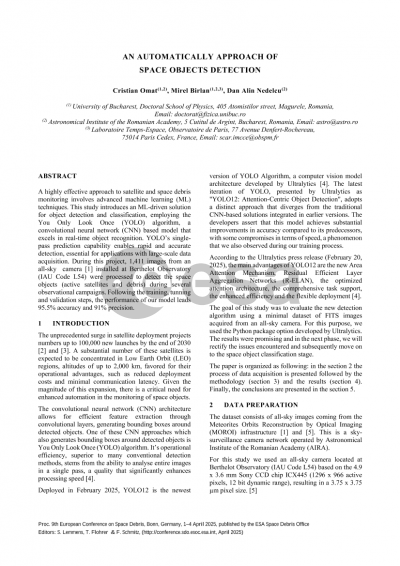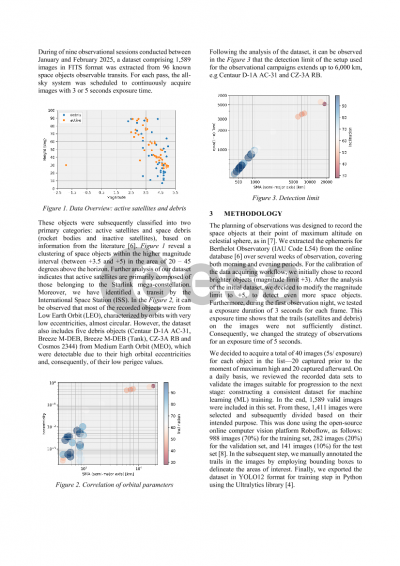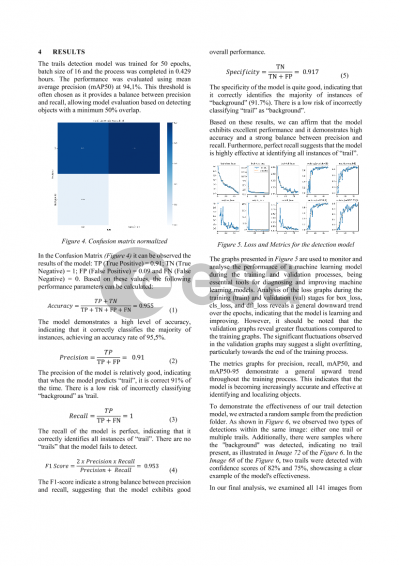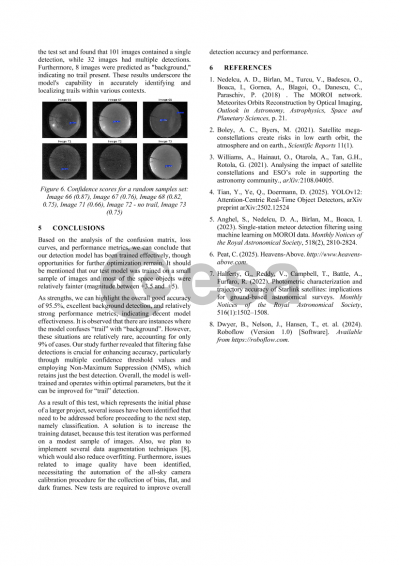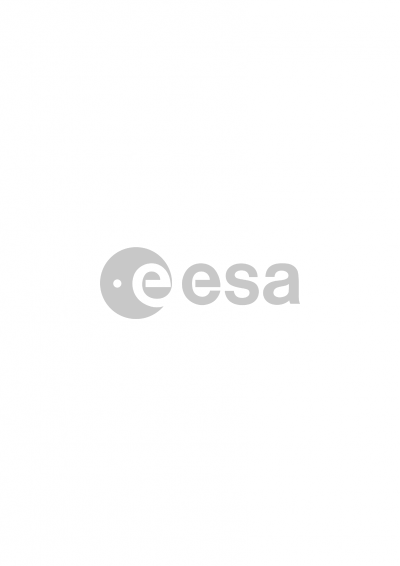Document details
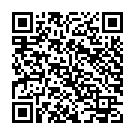
Abstract
The studies by (Boley and Byers, 2021) and (Williams et al., 2021) forecast an unprecedented surge in satellite deployments, projecting up to 100,000 new launches by the end of 2030. A substantial number of these satellites is expected to be concentrated in Low Earth Orbit (LEO) regions—altitudes of up to 2,000 km—favored for their operational advantages, such as reduced deployment costs and minimized communication latency. Given the magnitude of this expansion, there is a critical need for enhanced automation in the monitoring of space objects.
A highly effective approach to satellite and space debris monitoring involves advanced machine learning (ML) techniques. This study introduces an ML-driven solution for object detection and classification, employing the You Only Look Once (YOLO) algorithm, a convolutional neural network (CNN)-based model that excels in real-time object recognition. YOLO’s single-pass prediction capability enables rapid and accurate classification, essential for applications with large-scale data acquisition. In this research, images from two all-sky cameras (Nedelcu et al, 2018) positioned approximately 180 km apart are processed to identify and classify objects in real time. The CNN architecture allows for efficient feature extraction through convolutional layers, generating bounding boxes around detected objects. YOLO’s operational efficiency, superior to many conventional detection methods, stems from its ability to analyze entire images in a single pass, a quality that significantly enhances processing speed (Ch and Tallam, 2024).
For the model’s training, a curated dataset of around 1,000 all-sky images was utilized. The choice of all-sky cameras was strategically driven by their cost-effectiveness and suitability for wide-field observations, making them an optimal solution for tracking LEO satellites and space debris. These cameras provide reliable detection capabilities for objects with a magnitude of up to +4, representing a valuable tool in addressing the growing demands of space surveillance.
The relevant for the study validation is the confusion matrix, the chart that shows how our model handles different classes of objects (satellites, space debris, planes, meteors). The behavior of our model is convincing and after a new training step with more samples data, the results will be even better.
References:
Boley, A. C., Byers, M.: “Satellite mega-constellations create risks in low earth orbit, the atmosphere and on earth.”, Scientific Reports 11(1), (2021)
Williams, A., Hainaut, O., Otarola, A., Tan, G.H., Rotola, G.: “Analysing the impact of satellite constellations and ESO’s role in supporting the astronomy community.”, arXiv preprint arXiv:2108.04005, (2021)
Nedelcu, A. D., Birlan, M., Turcu, V., Badescu, O., Boaca, I., Gornea, A., Blagoi, O., Danescu, C., Paraschiv, P.: “The MOROI network. Meteorites Orbits Reconstruction by Optical Imaging”, Outlook in Astronomy, Astrophysics, Space and Planetary Sciences, (2018)
Ch, S., Tallam, T.: “Pothole detection and dimension estimation by deep learning”, IOP Conference Series: Earth and Environmental Science, (2024)
Preview
